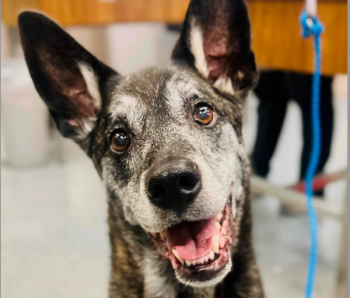
The top 10 advances in veterinary oncology (Proceedings)
The past 5 years have brought about some noteworthy and exciting changes in veterinary oncology, many of which are available to the practitioner or the client willing to consider referral. A brief discussion of these advances, their applications, and potential for the future, may be helpful in informing the clinician and the dedicated client. Some of these may be covered in greater detail in other lectures in this series.
The past 5 years have brought about some noteworthy and exciting changes in veterinary oncology, many of which are available to the practitioner or the client willing to consider referral. A brief discussion of these advances, their applications, and potential for the future, may be helpful in informing the clinician and the dedicated client. Some of these may be covered in greater detail in other lectures in this series.
Receptor tyrosine kinase inhibitors
Receptor tyrosine kinases (RTKs) are signaling molecules present on the surface of most cells. Upon stimulation by their respective growth factors, intracellular signals are sent supporting cell growth, avoidance of death, blood vessel production (angiogenesis), invasion and migration, all of which are important characteristics of cancer. Alterations in the expression or function of these RTKs may contribute to the development and/or progression of many cancers.
Recently, a large number of cancer drugs that target RTKs have been developed, and many are currently available on the human market. Similarly, several drugs that inhibit RTK signaling are poised for clinical approval for veterinary patients as well. The first of such drugs (tocernib, masitinib) are now approved for canine mast cell tumors, some of which express an activated form of an RTK called KIT. These drugs hold significant promise for the treatment of canine tumors, either as single agents or eventually in combination with other forms of therapy such as surgery, radiation therapy and chemotherapy.
Flow cytometry and pcr for lymphoma / leukemia
The University of California at Davis, Colorado State University and North Carolina State University can perform immunophenoptying on fresh fine-needle aspirates or peripheral blood samples using flow cytometry. This technique allows the labeling of individual cells with antibodies to determine the origin of a lymphoma or leukemia. This has been useful as a diagnostic for the patient with leukocytosis, helping to distinguish between likely reactive leukocytosis and leukemia. It may also be able to provide prognostic information in patients with lymphoid leukemias. Finally, it appears to be useful for distinguishing lymphoma from thymoma in animals with mediastinal masses. The participating labs typically accept samples from around the USA. Fresh cells are required, and fine-needle aspirates must be placed in special transport medium and shipped overnight for evaluation.
Another method for establishing immunophenotype is through PCR for antigen receptor rearrangmenent (PARR). This molecular diagnostic test evaluates the presence or absence of a clonally expanded population of B cells or T cells, and is approximately 85% sensitive and 95% specific for canine lymphoid neoplasia. It can also be performed on feline samples. An advantage of this technique is that it can be performed on almost any type of sample, including air-dried or previously stained cytology slides, effusions, aspirates, cerebrospinal fluid, and peripheral blood. Formalin-fixed tissues cannot be used.
The forms for flow cytometry and PCR at CSU can be downloaded from:
Multi-drug resistance mutation testing
Certain breeds, particularly the collie-type breeds, have a higher risk of toxicity reactions from cancer drugs that are actively transported by the p-glycoprotein (P-GP) pump (e.g., vinca alkaloids, doxorubicin, dactinomycin, taxanes). These breeds have a high frequency of a mutation of the multidrug resistance 1 [MDR1] gene, which diminishes the excretion of P-GP substrate chemotherapeutic drugs, leading to increased exposure. If a dog is homozygous for the mutant allele, it is affected and at risk. If it is a heterozygote, it is a carrier and its risk of increased toxicity is currently unknown. The frequency of these mutations has been characterized in several breeds in different geographic locations. A genotyping assay (performed on cheek swabs) for mutation status is available through Washington State University. P-glycoprotein substrate drugs are either avoided entirely (preferred) in dogs that are homozygous for the MDR1 mutation or administered cautiously at significantly reduced dosages.
The submission information for MDR1 genotyping is available at:
Stereotactic radiosurgery / intensity-modulated radiation therapy
Stereotactic radiosurgery (SRS) involves the delivery of one or several large doses of radiation therapy to an affected body part, using very sophisticated treatment planning and delivery devices to insure avoidance of toxicity to surrounding normal tissues. Currently, CSU, the University of Florida, and private practices in New York and California are offering SRS as a limb-sparing option for dogs with osteosarcoma (OSA). It is also being investigated as a potential alternative to conventional RT in dogs and cats with tumors of the central nervous system, as well as tumors of other locations. Recent preliminary data in OSA suggest that a combination of SRS and chemotherapy may result in outcomes nearly as good as traditional amputation and chemotherapy, with very good preservation of function. The outcome seems to be improved in dogs with relatively small lesions with minimal bony lysis and minimal soft-tissue extension.
A similar variation on this theme, intensity-modulated radiation therapy (IMRT), utilizes the same advanced treatment planning and delivery approach to avoid delivering significant doses of radiation to sensitive structures while maximizing delivery to tumor, using a conventional fractionation approach (i.e. daily treatment for several weeks). The recent initiation of this approach at CSU has dramatically reduced the incidence and severity of acute radiation effects in dogs with nasal tumors, and has allowed "full-course" or "definitive" radiation therapy to be delivered to sensitive areas such as bladder and prostate, previously considered very challenging to treat with RT.
Interventional radiology
Recently, there has been increased interest in using imaging to aid in the treatment of animal cancer using regionally delivered drugs and devices. This strategy has been in use in humans for years. Two examples of this technology include chemoembolization and stent placement.
Chemoembolization refers to the delivery of vascular occluding substances and chemotherapy through a selectively catheterized vessel within a tumor, identified using angiography. This technique has shown promise for the treatment of unresectable liver tumors in animals. It is possible that additional indications for this technique (e.g. palliation of epistaxis in dogs with nasal tumors, palliation of pain in dogs with OSA) may be explored in the future.
Expandable stents can be very useful for relieving luminal obstruction due to neoplasia. Under fluoroscopic guidance, expandable metallic stents can be placed in the urethra of dogs with urethral neoplasia, resulting in increased urine flow in dogs with obstruction or near-obstruction. Similar stents can be placed in the ureters, and in the colon.
Low -dose, continuous (metronomic) chemotherapy
The frequent or continuous administration of relatively low doses of cytotoxic chemotherapy drugs (i.e. low-dose metronomic [LDM] chemotherapy) is arising as a possibly effective alternative to conventional, high-dose approaches to anticancer drug administration.
While modulation of the immune system may play a role in LDM chemotherapy's activity, most attention has focused on anti-angiogenic mechanisms, which target tumor-associated blood vessel recruitment and growth. Specifically, LDM chemotherapy has been demonstrated to selectively inhibit the growth and function of growing endothelial cells and profoundly reduce the outgrowth of endothelial precursor cells from the bone marrow, resulting in decreased angiogenesis. Some of the anti-angiogenic effects of LDM chemotherapy may be due to increased production of the potent anti-angiogenic peptide thrombospondin-1 (TSP-1).
There is preliminary evidence in the veterinary literature that this approach may be useful in dogs with hemangiosarcoma and soft-tissue sarcomas; however, the optimal drugs, dosages and schedules have yet to be determined.
The rebirth of lomustine
Lomustine is an oral multifunctional alkylating agent that has been available for more than 25 years. Over the past 5-10 years, its use in veterinary oncology has increased significantly. It appears to be efficacious as a treatment for canine mast cell tumor, and as a rescue therapy for canine multicentric lymphoma (either alone or in combination with prednisone and asparaginase). It is also becoming accepted as first-line therapy for canine cutaneous lymphoma and malignant histiocytic diseases. Unfortunately, lomustine does not appear to be an efficacious first-line treatment for canine lymphoma. There are reports of efficacy in feline mast cell tumor, lymphoma and injection-site sarcoma as well. Lomustine has the potential to cause neutropenia as an acute effect, and two unique cumulative adverse effects that should be watched for are thrombocytopenia and hepatotoxicity.
Mitotic index and mast cell tumors
While a variety of studies over the years have suggested that rate of growth of canine mast cell tumors may help predict outcome (e.g. owner history, presence of tumor ulceration, molecular markers of proliferation), a recent study evaluated a simple but quantitative method for evaluating proliferation, by obtaining a mitotic index on an H&E stained section. This requires no special stains and little extra time for the pathologist. A cutoff of 5 mitoses per 10 high-power fields was able to significantly discriminate between dogs with grade II mast cell tumors with a good outcome and those with a poor outcome following surgery (70 vs 5 months median survival time).
Alternative / complementary medicine
The use of complementary and alternative medical (CAM) therapies is becoming widespread. In a recent study done by the National Center for Complementary and Alternative Medicine (NCCAM) and the National Center for Health Statistics, 75% of responders had used CAM at some point in their lives and 62% had used it in the past 12 months.
A recent CSU survey found that 76% of owners presenting their pets for care at the Animal Cancer Center reported the use of some type of CAM. Nutritional supplements were used most commonly with 40% reporting use. Clients reported using CAM modalities in order to improve general well being followed by enhancing immune function. Very few reported using them to cure cancer. 64% of the respondents said they thought their veterinarian supported the use of CAM therapies; however, 57% had not spoken to their veterinarian about the use.
Due to their widespread use, concern has arisen over the possible interactions of CAM therapies with traditional treatments. Herbal products in particular have been shown to alter the activity of drug metabolizing enzymes (cytochrome p450) or bind to drug transporter proteins (p-glycoprotein), potentially interfering with the pharmacokinetics of an intended chemotherapeutic drug and resulting in increased or decreased drug levels or alterations in rates of clearance. In some instances, the herbal could have direct toxicity or can interfere with laboratory analysis of other compounds. To avoid unwanted interactions that negate treatment efficacy, or possibly increase unwanted side effects, it is important to know if these CAM therapies are being used concurrently with traditional therapies.
The comparative oncology program / COTC / CCOGC
In 2003, the National Cancer Institute's Center for Cancer Research (CCR) launched the Comparative Oncology Program (COP) to help researchers better understand the biology of canine and feline cancer and to improve the assessment of novel treatments for humans by treating pet animals, primarily cats and dogs, with naturally occurring cancer, giving these animals the benefit of cutting-edge research and therapeutics. In addition to an internal research effort, the COP coordinates 2 co-operative research efforts involving academic veterinary institutions throughout the country:
The Comparative Oncology Trials Consortium (COTC) is an active network of academic comparative oncology centers, centrally managed by the COP that functions to design and execute clinical trials in dogs with cancer to assess novel therapies. The goal of this effort is to answer biological questions geared to inform the development path of these agents for future use in human cancer patients. These trials are carried at COTC member institutions, which currently include 18 sites around the country. Clinical trials are available for participation at many of these institutions.
The goal of the Canine Comparative Oncology Genomics Consortium (CCOGC), supported but the COP, the Broad Institute for Genomics at MIT, and Pfizer, is to populate a biospecimen repository with samples of tumor tissue, normal tissue and biofluids from 3,000 spontaneous canine cancers. Tumors being collected represent those of major importance to canine health, but also have significant comparative value for human cancer investigation.
It is hoped that these initiatives, in addition to providing access to clinical trials for interested owners, may eventually lead to better understanding of the biology of canine and feline cancer, leading to enhanced treatment and quality of life for our pets with cancer.
References
Burnett RC, Vernau W, Modiano JF, et al (2003). Diagnosis of canine lymphoid neoplasia using clonal rearrangements of antigen receptor genes. Vet Pathol Vol. 40: 32-41.
Elmslie RE, Glawe P, Dow SW (2008). Metronomic therapy with cyclophosphamide and piroxicam effectively delays tumour recurrence in dogs with incompletely resected soft tissue sarcomas. J Vet Intern Med Vol. 22: 1373-1379.
Hahn KA, Ogilvie G, Rusk T, et al. Masitinib is safe and effective for the treatment of canine mast cell tumors. J Vet Intern Med 22: 1301-1309, 2008.
Lana SE, Kogan LR, Crump KA, et al (2006). The use of complementary and alternative therapies in dogs and cats with cancer. J Am An Hosp Assoc Vol. 42: 361-365.
London CA, Malpas PB, Wood-Follis SL, et al (2009). Multi-center, Placebo-controlled, Double-blind, Randomized Study of Oral Toceranib Phosphate (SU11654), a Receptor Tyrosine Kinase Inhibitor, for the Treatment of Dogs with Recurrent (Either Local or Distant) Mast Cell Tumor Following Surgical Excision. Clin Cancer Res Vol. 9: 2755-2768.
Mealey KL. Therapeutic implications of the MDR-1 gene. J Vet Pharmacol Ther. 2004; 27: 257-64.
Skorupski KA, Clifford CA, Paoloni MC, et al (2007). CCNU for the treatment of dogs with histiocytic sarcoma. J Vet Intern Med Vol. 21: 121-126.
Weisse C, Berent A, Todd K, et al (2006). Evaluation of palliative stenting for management of malignant urethral obstructions in dogs. J Am Vet Med Assoc Vol. 229: 226-234.
Weisse C (2009). Hepatic chemoembolization: a novel regional therapy. Vet Clin North Am Small Anim Pract Vol. 39: 627-630.
Williams MJ, Avery AC, Lana SE, et al (2008). Canine lymphoproliferative disease characterized by lymphocytosis: immunophenotypic markers of prognosis. J Vet Intern Med Vol. 22: 596-601.
NIH Comparative Oncology Program:
Newsletter
From exam room tips to practice management insights, get trusted veterinary news delivered straight to your inbox—subscribe to dvm360.






